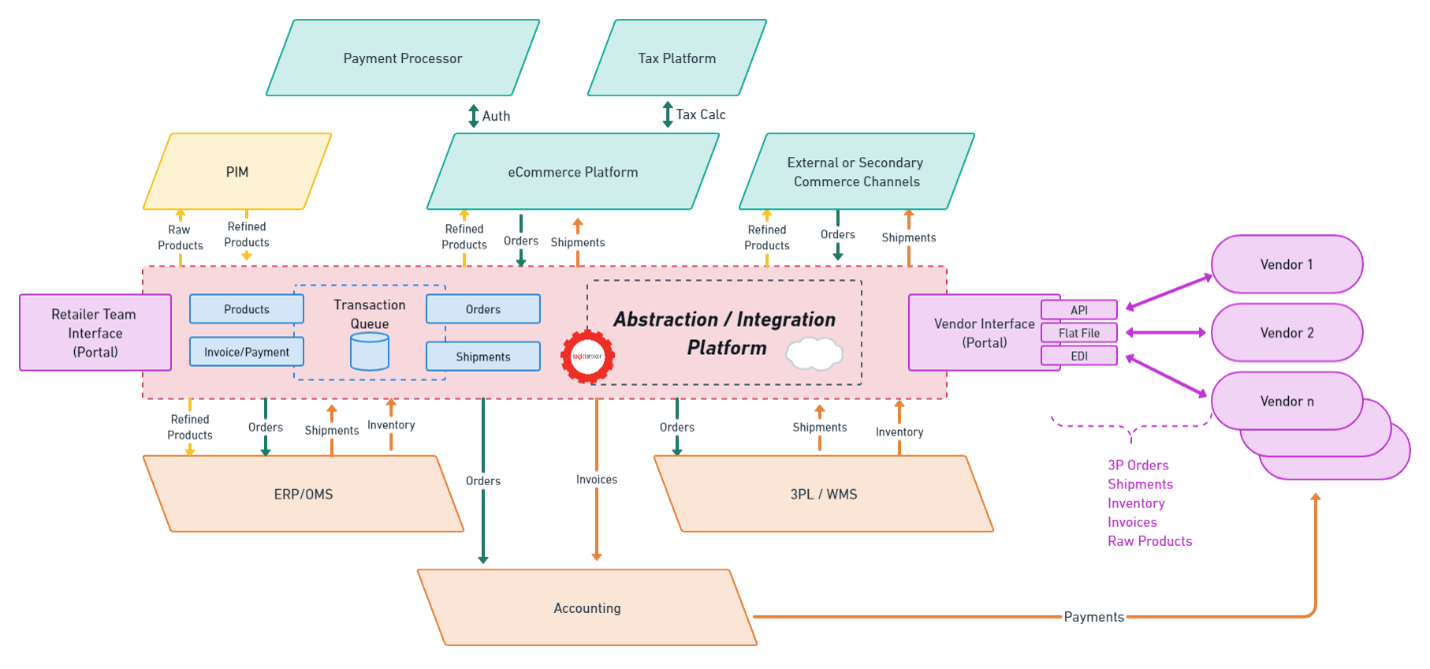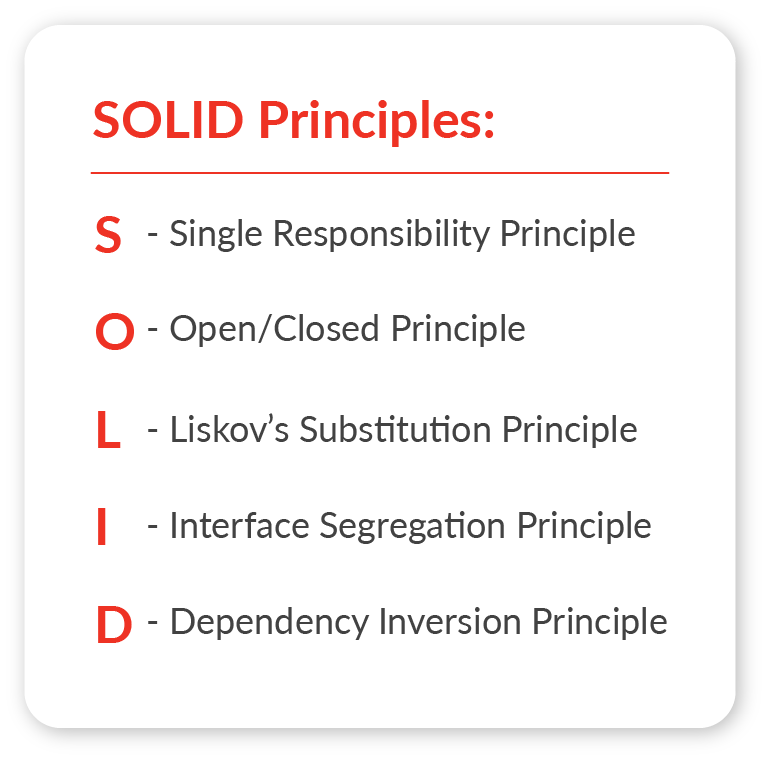 Are you the victim of a tightly coupled eCommerce Tech Stack?
Are you the victim of a tightly coupled eCommerce Tech Stack?
By Logicbroker | May 12, 2022
With many eCommerce departments and companies reevaluating their tech stack, “replatforming” is the new buzzword. If your team is planning on shifting off a monolithic platform or antiquated ERP, your team may experience excitement followed by dread. The main reason for that dread is the issue of tightly coupled components. Replacing an ERP or eCommerce frontend is by itself a large project—and then every adjacent system needs to change, too. This is the leading reason some large businesses still have homegrown versions or AS400 backends.

When systems are tightly coupled, the cost to replace a component can easily eclipse the cost of the component itself. If you find your team asking, “why can’t we try a more modern software?” or “why are we still on-prem?” you may be the victim of a tightly coupled tech stack. Let’s review the full list of symptoms:
- Replacement components must fit exactly or be designed specifically for your system
- You have many aging in-house built components
- Knowledge of component interactions and rules has been lost over time
- Adding new technologies takes far longer than expected
- Blackbox syndrome: a condition in which trial and error and luck play a huge role in success
- Component centric data structures have invaded all reporting and automation
- Vendor-lock in: the cost of switching to different vendors is so high that you’re stuck with the originals.
- You have difficulty capitalizing on fast-moving trends or game-changing events, like the pandemic
Benefits of a loosely coupled tech stack
The downsides of tightly coupled systems are clear. What are the advantages, then, of an architecture where components are not closely integrated? Here are just a few:
- Because components are isolated, making upgrades or major changes is easy and simple to test in isolation
- Visibility into data exchanges makes component failures easier to monitor and isolate (no more black boxes)
- The time required for changing components can be cut to a matter of months and can in some cases take place alongside the existing component, enabling a piecemeal migration instead of a wholesale cut-over.
- Adding functionality to a loosely coupled infrastructure is no longer a “big deal”
- If done properly, outages in one component will no longer bring down the entire system
- Reliance on scaling up a database for slow transaction inquiries can be offloaded to caching platforms even among components.
The key to a loosely coupled eCommerce stack: middleware platforms
The most innovative components in the eCommerce space are often stand-alone products specializing in the space they play in. (The best Product Information Management Systems (PIMs), for example, don’t also include eCommerce platforms or ERPs.) This movement toward stand-alone products has led to the rise of middleware, or abstraction software, which helps keep components from becoming too reliant on the other’s data structures.
There are various names for the principles of this type of architecture, like SOLID, or Separation of Concerns Services Oriented Architecture. In this case, let’s focus on that last letter in the SOLID principle, D, for Dependency Inversion. Dependency Inversion says that individual components should not talk directly with each other’s proprietary interfaces. Instead, an intermediary or abstract layer—also known as middleware—should be used to exchange data in a universal schema
Using middleware platforms to abstract and loosen the dependencies in other components is not a new concept. In fact, programmers have been using this approach for over two decades. Application and API gateways like CA’s Layer 7 and movements like API First have helped many companies manage complexity across their entire tech stack.
The strength of these middleware platforms is that they are generic enough to support any system component. At the same time, the foundational work of abstracting messages between all the components is a difficult journey for even seasoned IT organizations. In the case of eCommerce, for example, if the schema to pass invoices is so generic it could also be used to also pass product information, translation becomes a nightmare. This is especially true if you are handing the schemas to the public. Price, description, and quantity could appear anywhere, in a very loosely defined schema, putting you right back in the in the proprietary schema / tight coupling scenario.
The key is to fix the position of the key data attributes while still allowing room for variants. This is a lot harder than it sounds. Even in well-defined schemas, like EDI, you still need a team of people to deal with “flavors” or variants of interpretation. Alternately, you can choose an integration platform focused on eCommerce, like Logicbroker. Logicbroker offers up 10 years of battle-tested schemas, expertise, and the flexibility that comes from hooking hundreds of retailers to thousands of suppliers.

The benefits of using Logicbroker for replatforming
Using Logicbroker delivers all the benefits of loose coupling covered above, plus:
- Predefined and battle-tested schemas for eCommerce
- Drop ship and Marketplace vendor abstraction and fast onboarding
- One main integration, limitless options. Plug into your existing stack while migrating to a new one. When ready to go live, Logicbroker can flip a switch and route all orders from the new system while sunsetting the old.
- eCommerce system flow awareness. Orders interact with shipments and invoices. These messages do not exist in a vacuum or require enrichment monitoring. Corrections as messages flow between your systems and vendors.
- Multitenant cloud platform that offers advantages both in terms of uptime and scalability, but also in terms of handling connections from many retailers to many suppliers all in the same platform.
- Headless commerce: without tight coupling to an ERP, Logicbroker supports the ability to offer a buy button on any platform, or multiple platforms simultaneously.
- Global presence and experience in local eCommerce practices around the world
- Drop ship and Marketplace programs on the same platform, simultaneously
- Large network of suppliers, retailers, and marketplaces ready to leverage
Gone are the days of having to rely on antiquated tech and tightly coupled systems. By choosing a robust and modern middleware platform to drive your drop ship and marketplace fulfillment, your team can build a best-in-class tech stack to keep powering forward. Ready to get started? Chat with one of our solution experts today.
Modern dropship & marketplace solutions have never been so easy.
Are you ready to drive growth and gain unparalleled speed to market with a modern, scalable dropship or marketplace program? Fill out the form below to get in touch with our team:
